Straddling the border between Peru and Bolivia is Lake Titicaca, the world’s highest navigable lake. Its surface elevation sits at 3800 m (12,500 ft), which is 21 times higher than that of Lake Superior. Gregor and I have seen plenty of high-altitude lakes on our mountaineering trips, but never one as high as Lake Titicaca. We were looking forward to seeing this famous lake with our own eyes.
Having explored Machu Picchu and the Sacred Valley, we decided to leave Peru and enter Bolivia along the highway that skirts Lake Titicaca.
Lake Titicaca is surrounded by altiplano (Andean high plains), which kind of reminded us of the Alberta foothills. Flat golden plains, ranch lands, rolling hills in the distance…it had been about a year and a half since seen we’d seen this type of terrain.
Of course, there are a few differences between the Alberta foothills and the Andean altiplano. For example, there were lots of sheep instead of cattle:
Houses are made of adobe bricks instead of wood and siding:
And just like in the Peruvian desert, presidential campaign signs were painted directly on building walls:
Keiko Fujimori is the daughter of former Peruvian President Alberto Fujimori, who was convicted for human rights violations and embezzlement during his presidency. She was the runner-up to PPK. Crazy, right?
When Gregor and I caught our first glimpse of Lake Titicaca from the windshield, we were pretty excited. Next to mountains and beaches, lakes are a top destination for us. We both grew up in Manitoba, a province full of freshwater lakes teaming with wildlife and natural beauty. There’s a special energy around lakes – we always feel a sense of calm and wonder when we are standing on a lakeshore.
We got out of the van to marvel at the vastness of Lake Titicaca. The sky was clear blue and the bright morning sun was making the water shimmer. It took a few moments for us to feel the outside temperature.
“Geez, it’s kind of nippy, eh?” I said to Gregor.
“It’s frickin’ cold out here!” he said, zipping up his hoodie.
We had forgotten that we were at 3800 m altitude in the middle of South America’s winter. It was only 5 deg C outside and we obviously weren’t dressed for the occasion. Gregor and I hopped back into the van and decided to admire the lake from the comfort of our front seats.
We were reminded once again of the lake’s high altitude at our campground in Puno, Peru. That night, the temperature dipped to a low of -5 deg C. Fortunately, we brought down-filled sleeping bags rated for -12 deg C so we didn’t suffer through the night. But getting out of the warm sleeping bag in the morning was reeeeally tough. Once we warmed up with coffee and breakfast, we filled up the van with gas and crossed the border to Copacabana, Bolivia.
As soon as we entered the lakeshore in Copacabana, we felt a very good vibe. The town is known to be the site of ancient religious pilgrimages and is the gateway to the lake’s sacred islands of Isla del Sol (Island of the Sun) and Isla de la Luna (Island of the Moon). Lake Titicaca itself was a sacred site for several Andean civilizations, including the Puraka, Tiwanaku, and Inca peoples. According to Incan mythology, the god Con Tiqui Viracocha emerged from the lake and created human beings from stone. The Inca therefore believed that Lake Titicaca was the place of their origin, and their spirits would return to the lake upon their death. Given the spiritual history of this place, I guess it’s no surprise that we felt a special energy here.
Once we found a campsite, we parked Lucky and walked along the lakeside towards Copacabana’s town centre. We were surprised to find what I can only describe as a beachside resort town trapped in the 80’s. The shore was lined with tons of swan-shaped paddle boats and the boardwalk had rows of fuse ball tables.
Out on the lake, there were people screaming with delight as they steered various types of watercraft.
The entertainment-driven atmosphere was a little strange, but that good vibe that we felt when we first entered town was still there. As we walked through the streets of Copacabana, we grew to like the town even more. The Bolivian vendors weren’t pushy, the drivers weren’t reckless, and the pace of the town was pretty relaxed. Sure, the first two ATMs we tried had both failed and the tiny grocery stores sold mostly junk food (this is common in Latin America), but it really didn’t bother us like it has in other places.
In front of the town’s cathedral, there were many stalls with ladies selling flowers, colourful ribbons, and decorative streamers. It’s a tradition in Copacabana to have your new car blessed by a priest. During the blessing process, the ladies at the stalls adorn your car with flowers and decorations. Unfortunately, we came too late for the priest to bless Lucky, but we did manage to find a newly blessed taxi.
Following our traditions when we enter a new country, we bought and taste-tested several local beers until we found one we liked. Our favourite was Huari, a crisp lager that paired well with the lakeside air.
As we sipped our beer along the shore, Gregor and I watched the Bolivians go about their daily business. We were particularly fascinated by the traditional dress and stature of the older Bolivian women. They wore crinolined skirts with wooly shawls or sweaters, which made them appear rather stocky. Many also wore brimmed hats of various shapes and sizes to protect themselves from the intense sun of the altiplano. It’s a unique style of dress, and I liked seeing the ladies preserving the couture.
We watched the sun set over Lake Titicaca that evening and spent another chilly night at a campground along its shore.
We would have liked to stay longer at Copacabana, but the Bolivian government issues only 30-day tourist permits to foreigners. Thirty days may seem like ample time to drive through a country but given that Gregor is working part-time and we’re travelling in a VW van and the condition of many of Bolivia’s roads are famously poor, we had to be selective about our destinations. Sadly, we left Lake Titicaca the next day and left Copacabana’s good vibes behind.
We put Lucky on a rickety ferry to cross the lake’s Strait of Tiquina and headed towards Bolivia’s capital city of La Paz.

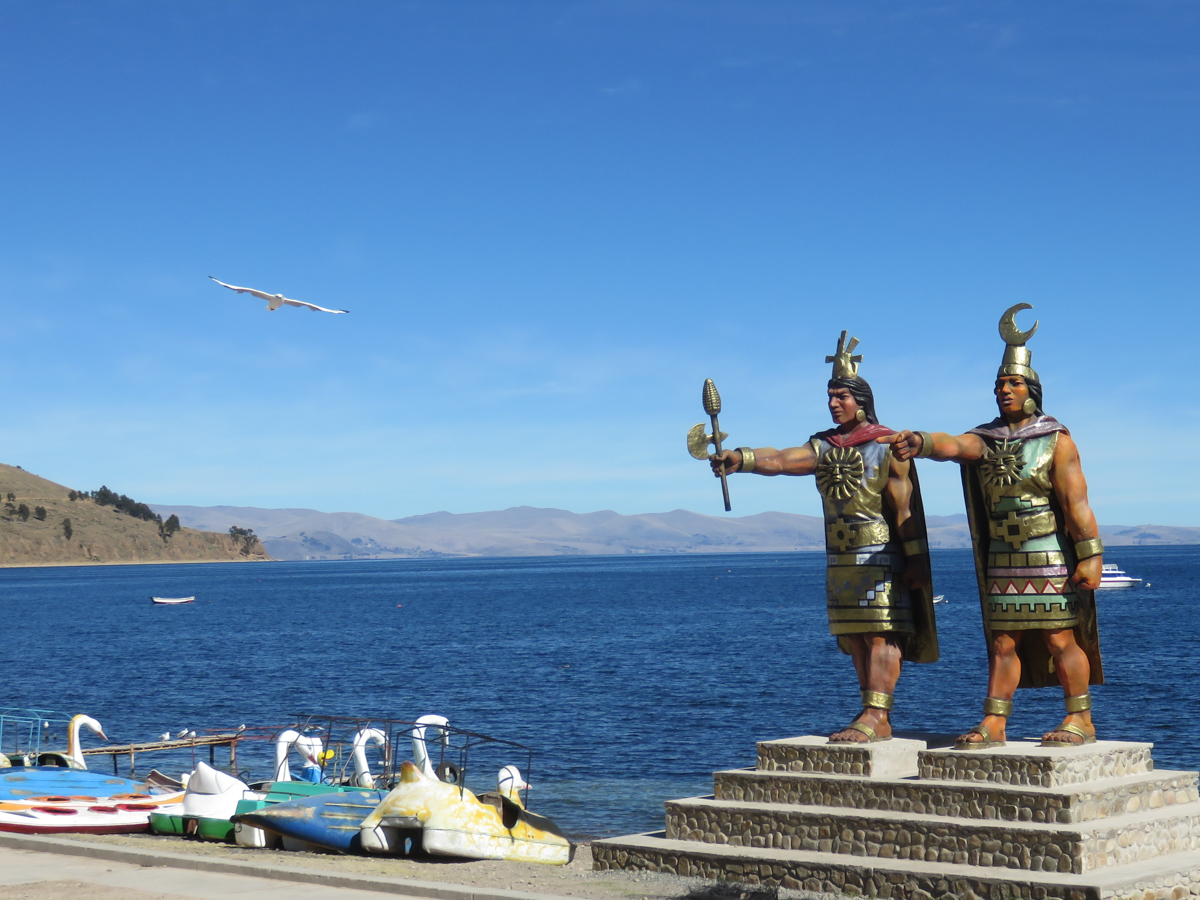
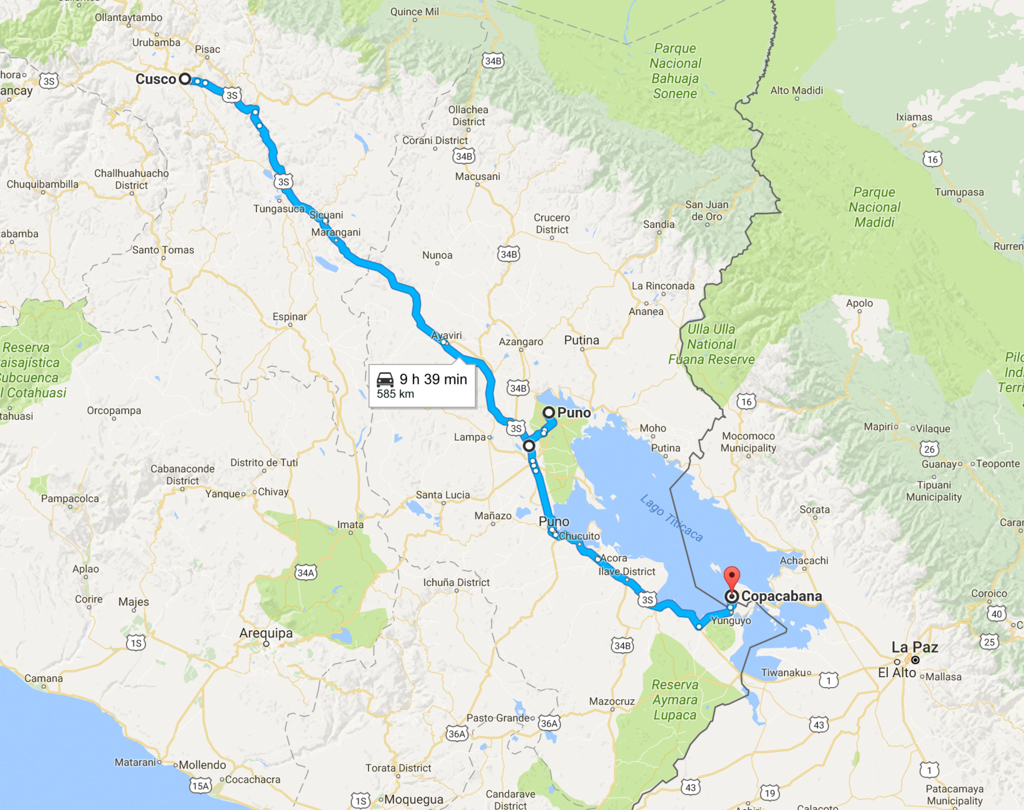
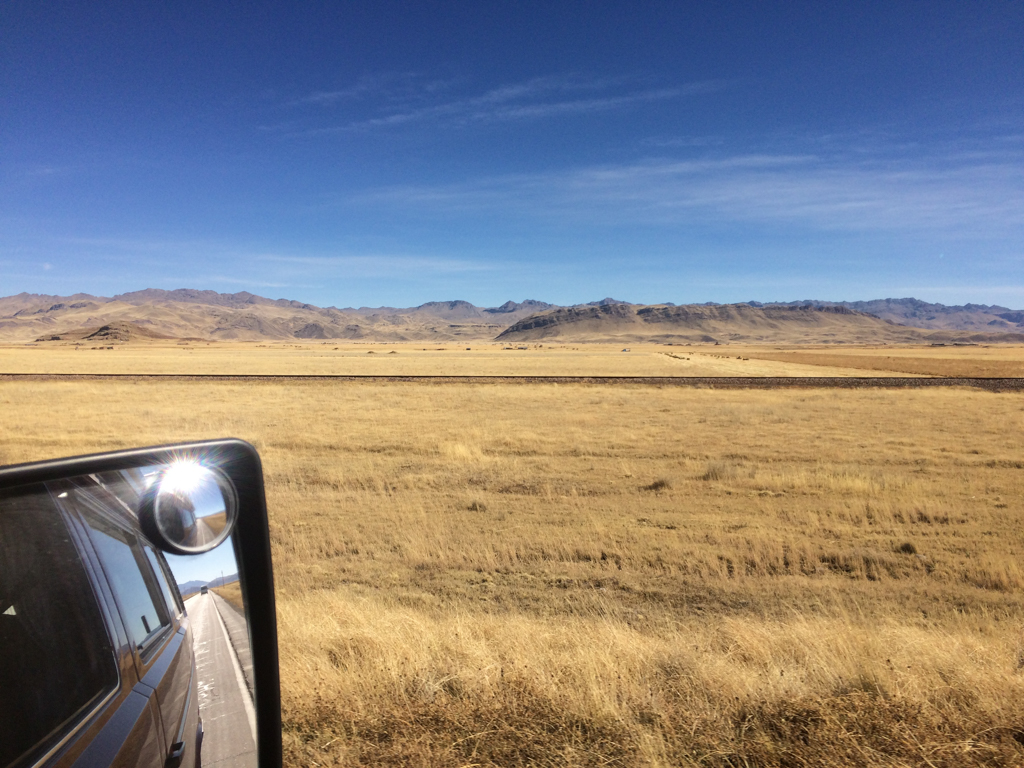

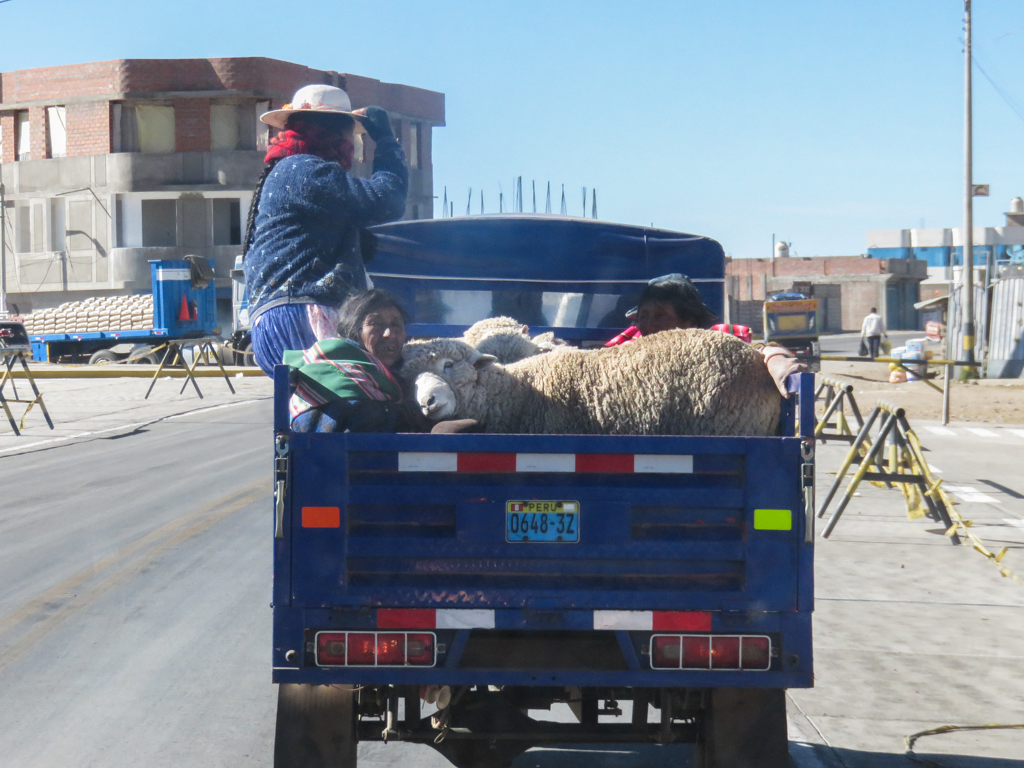
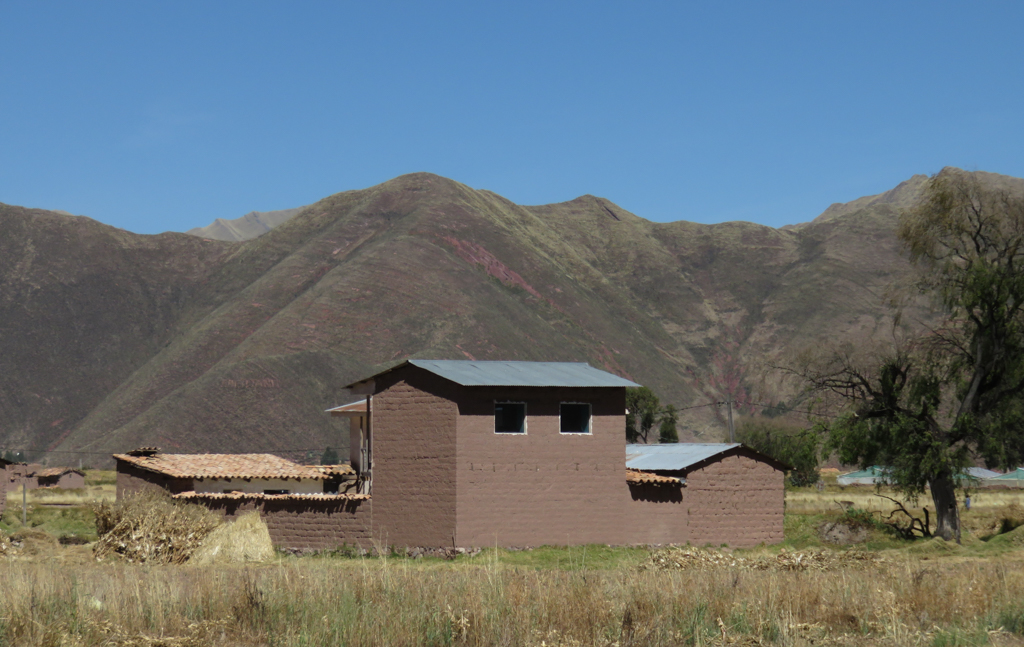
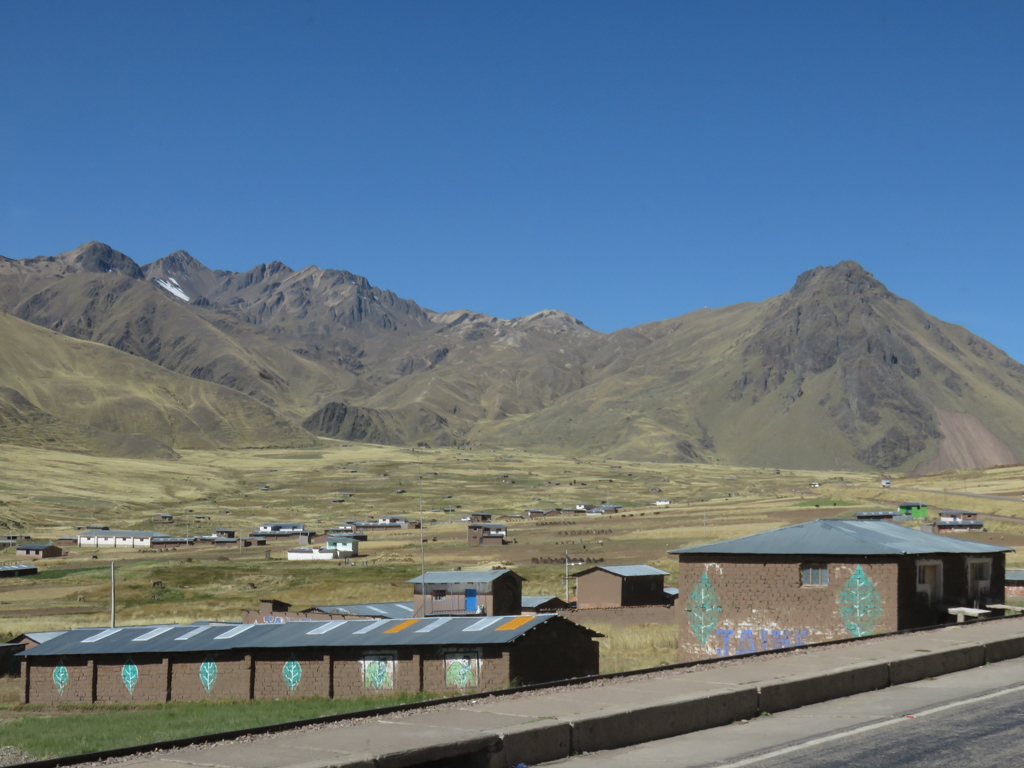
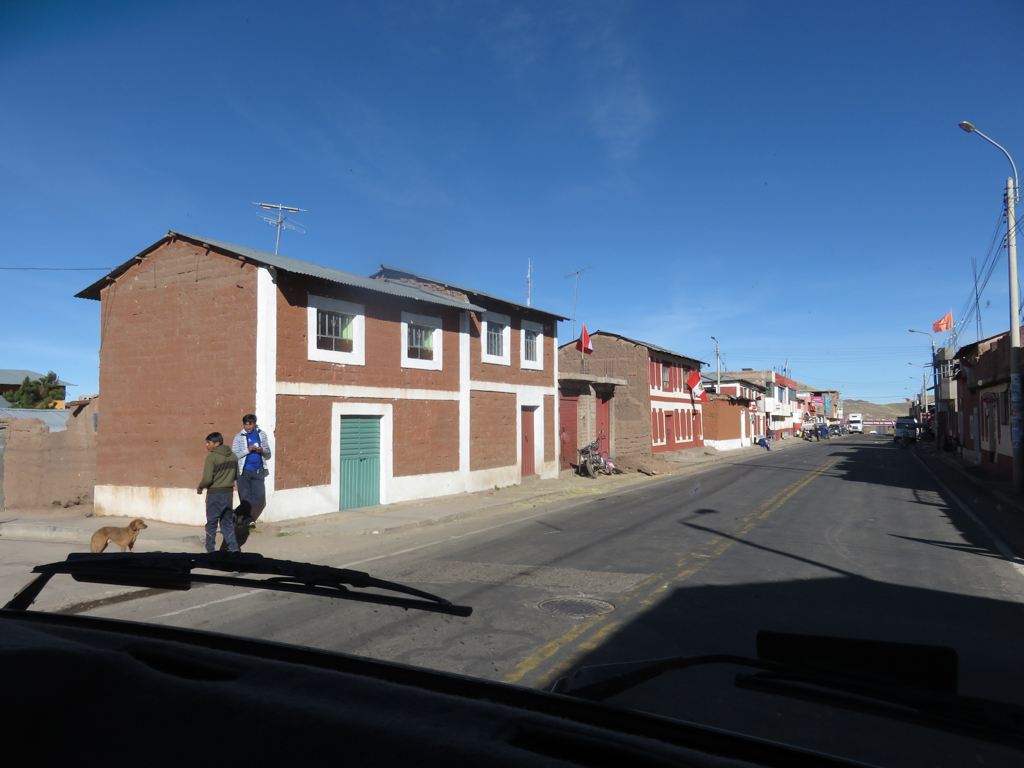
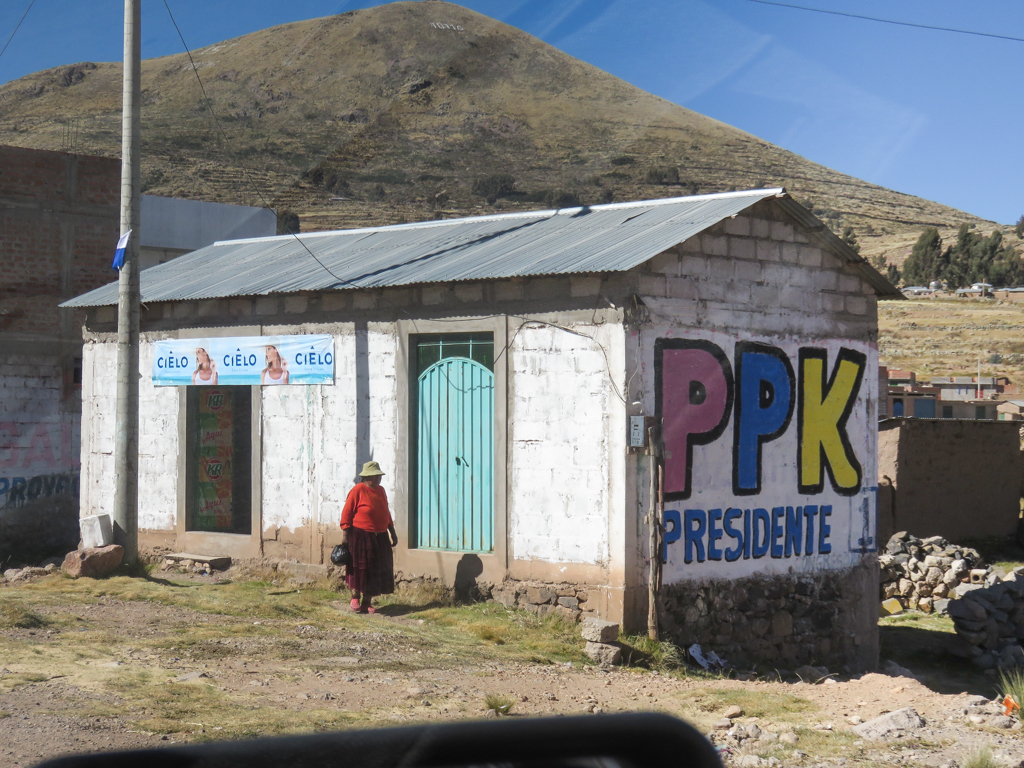
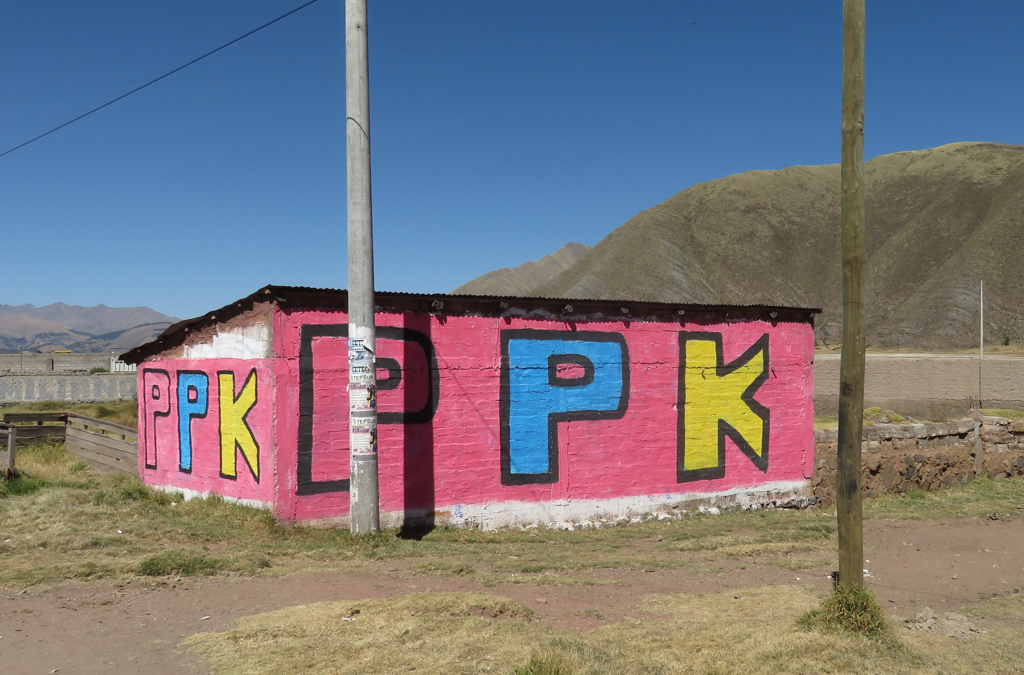
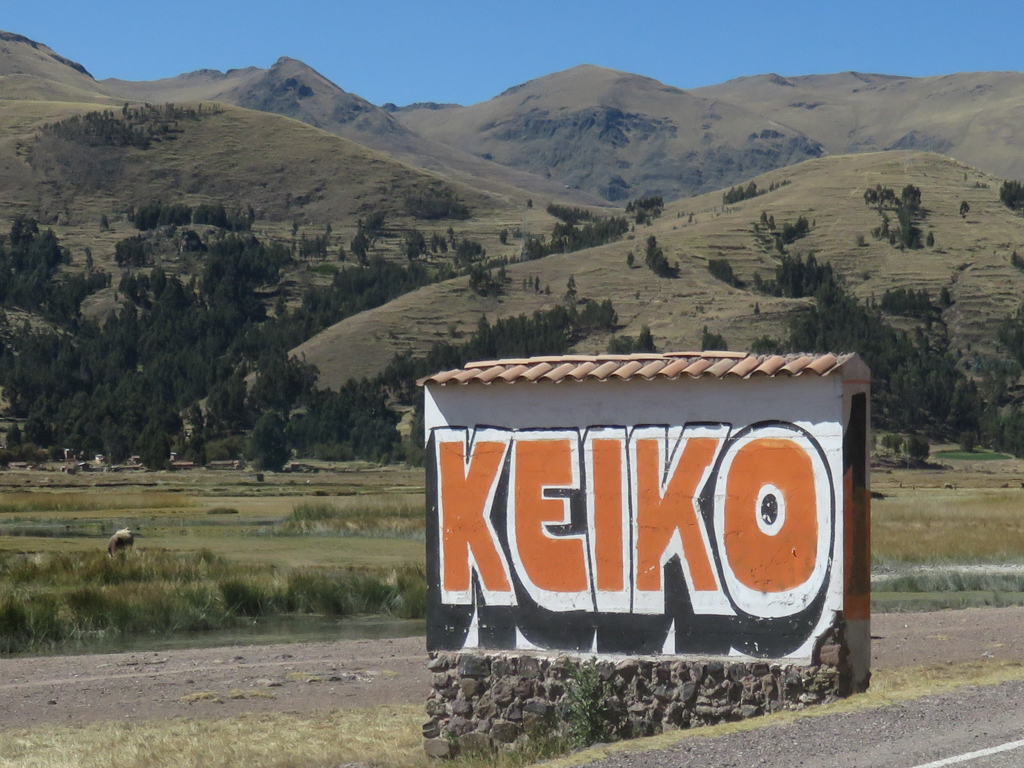
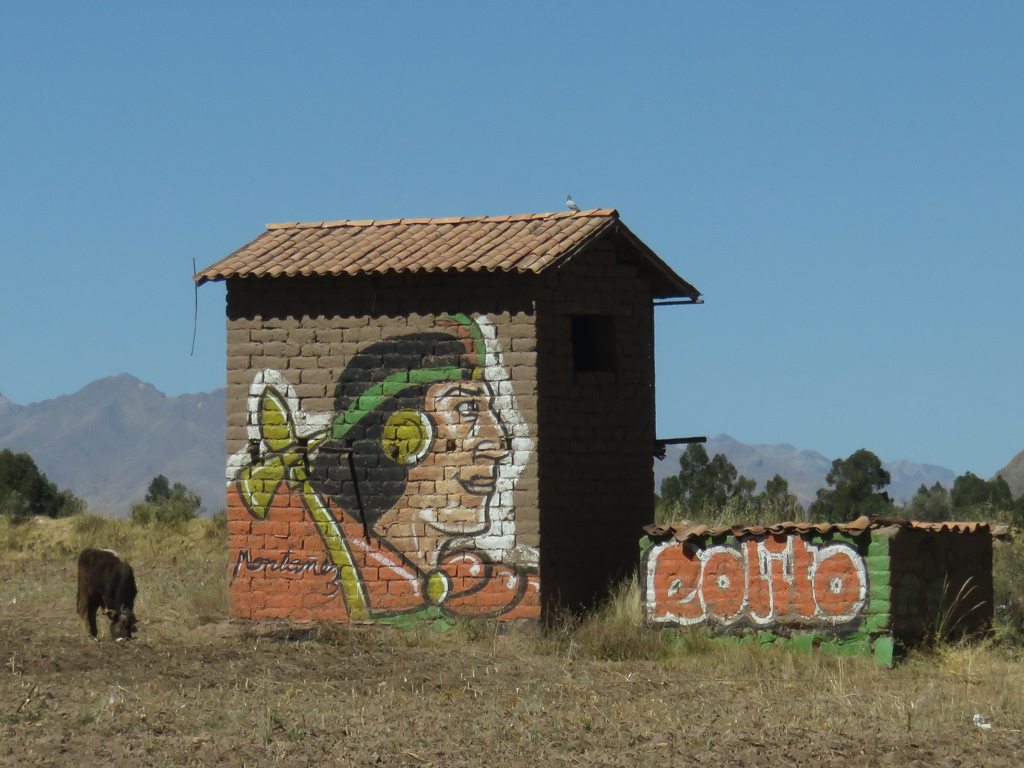
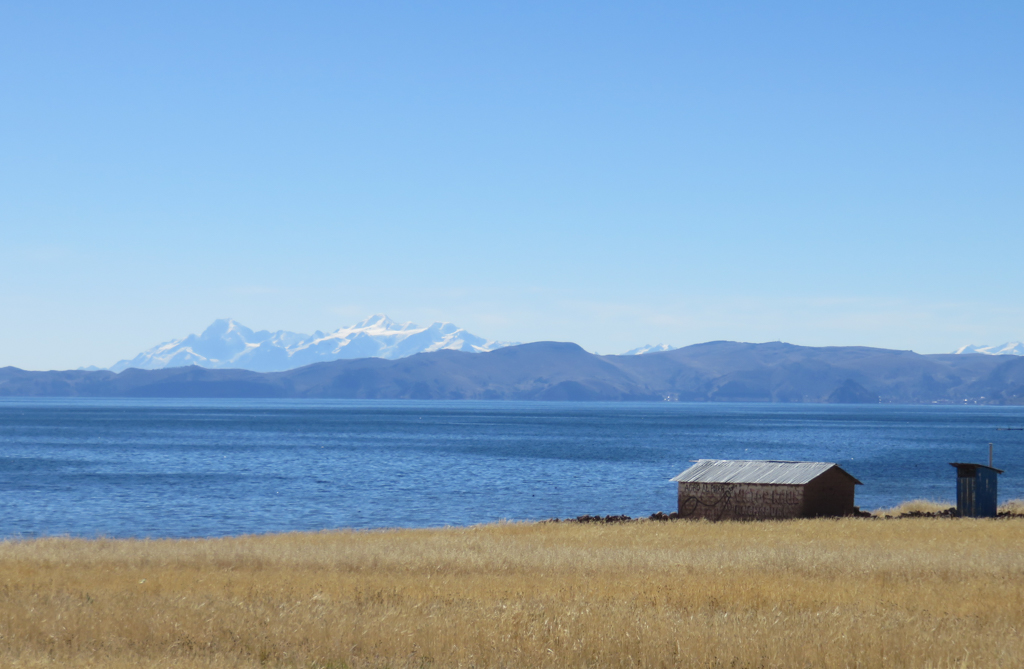
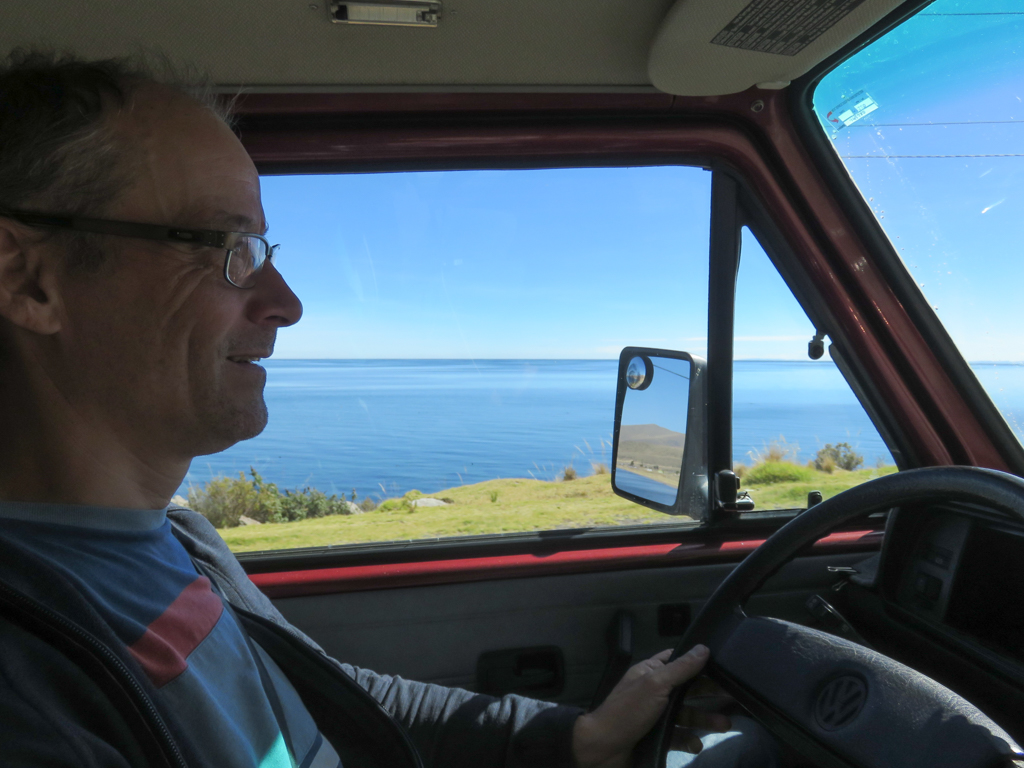

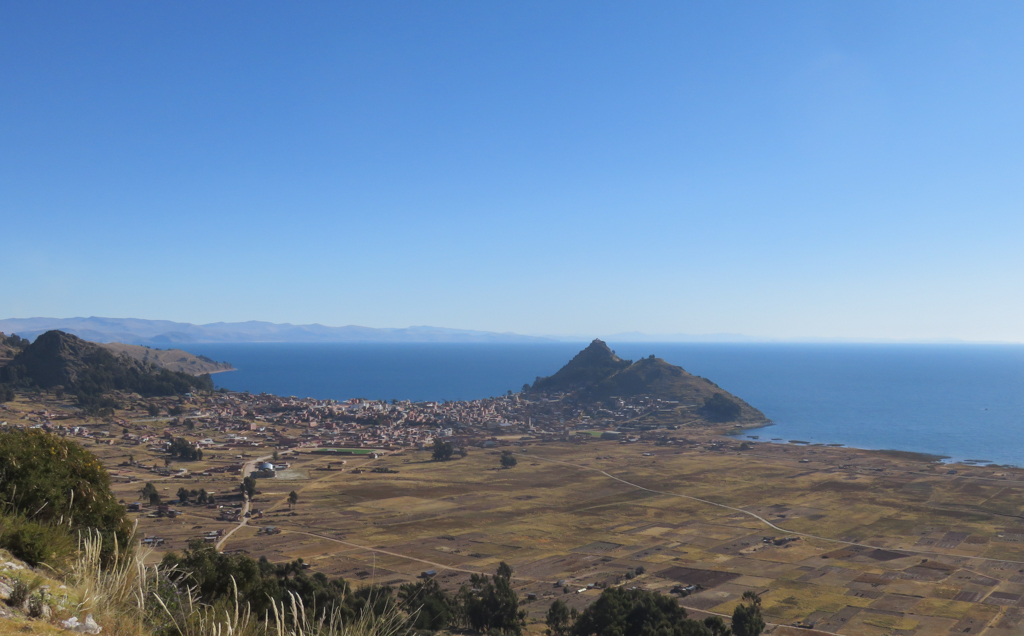
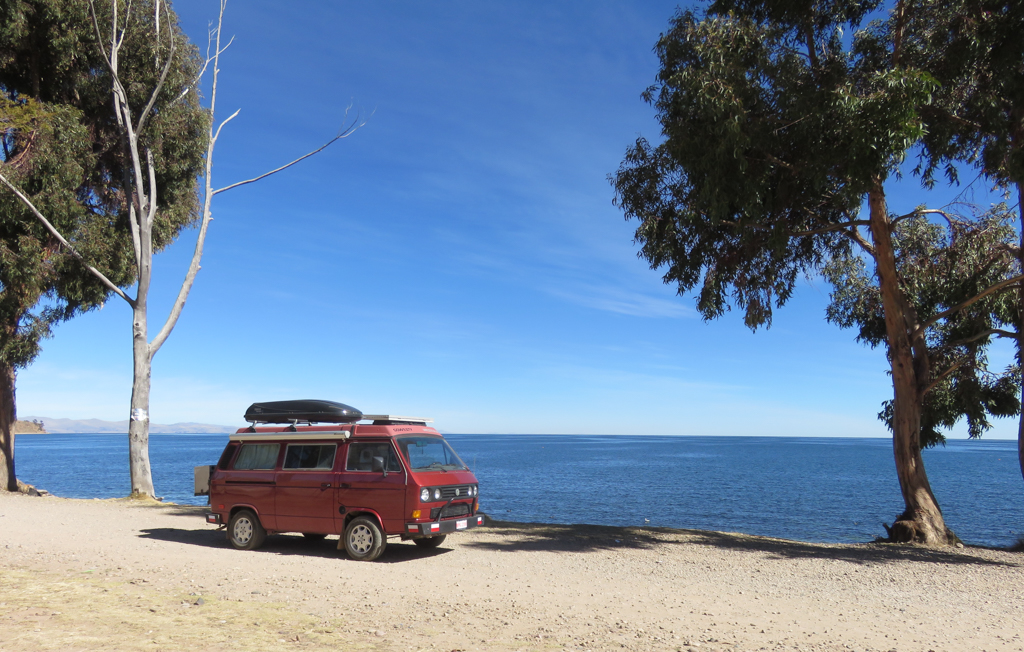
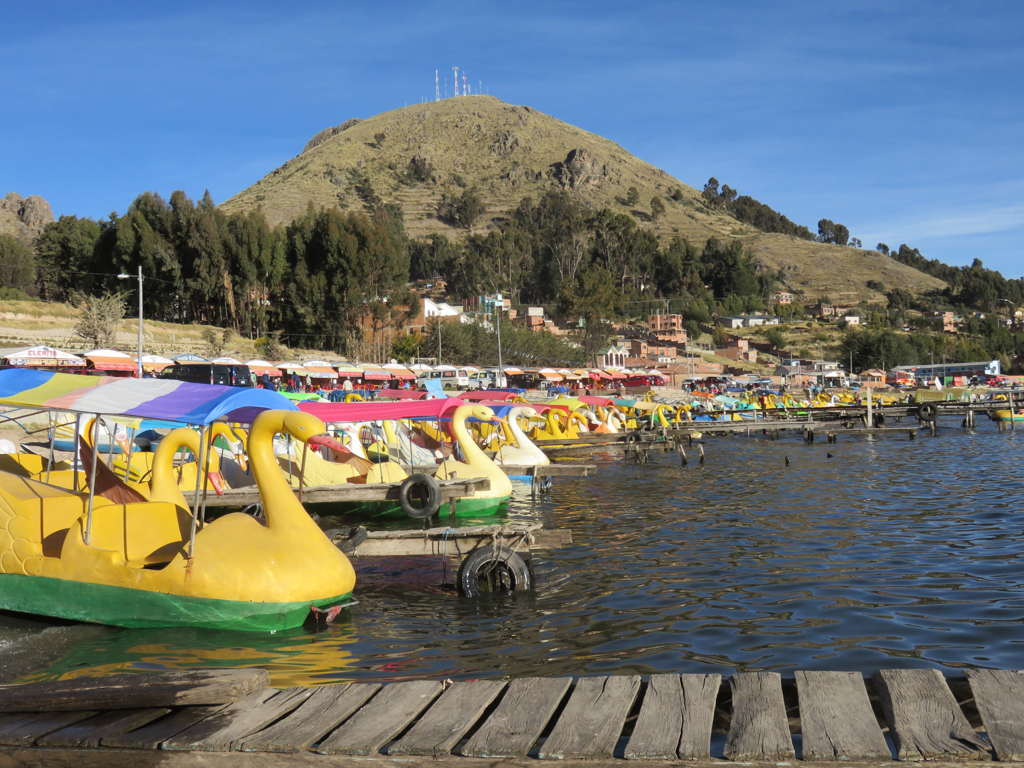
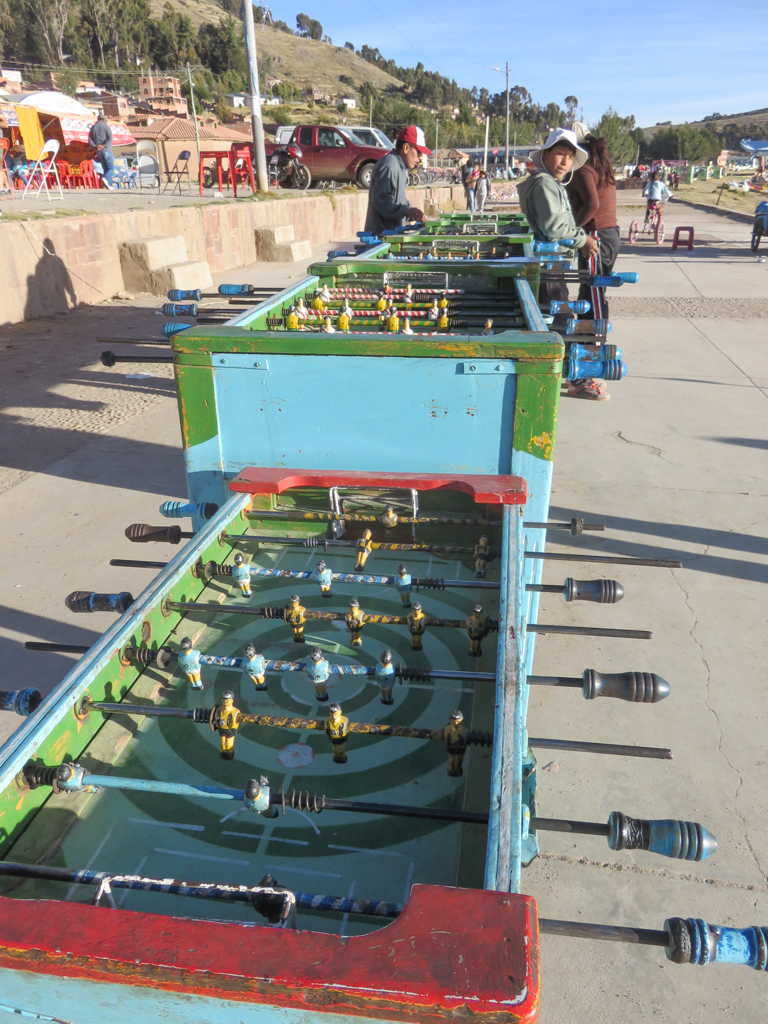
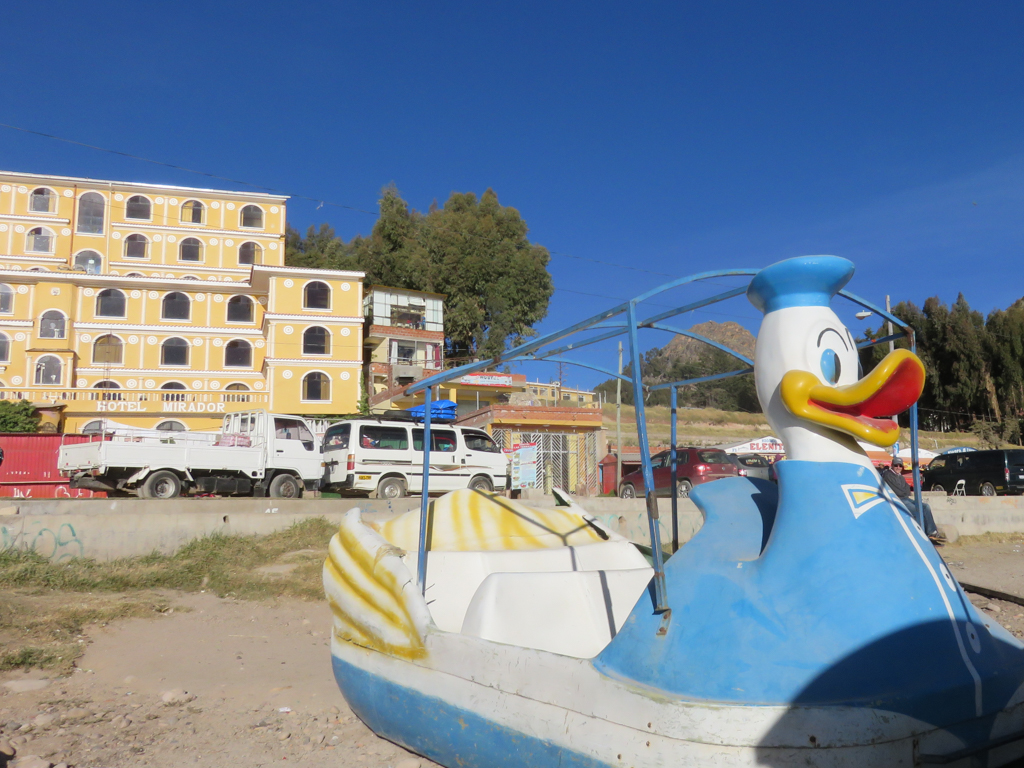
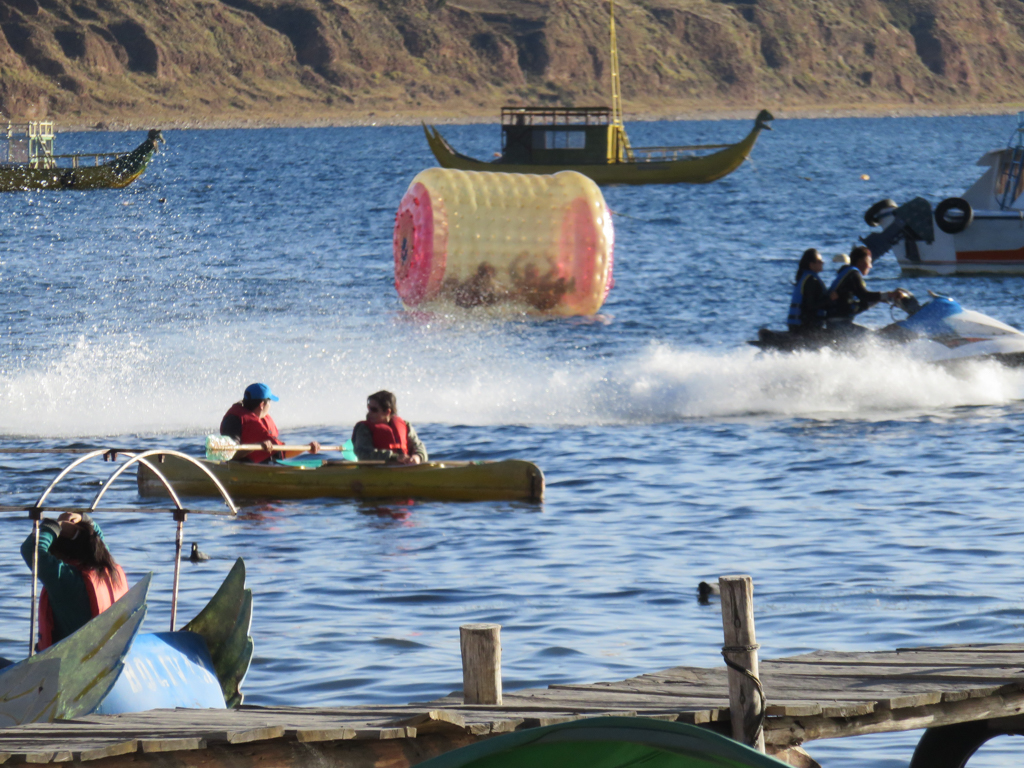
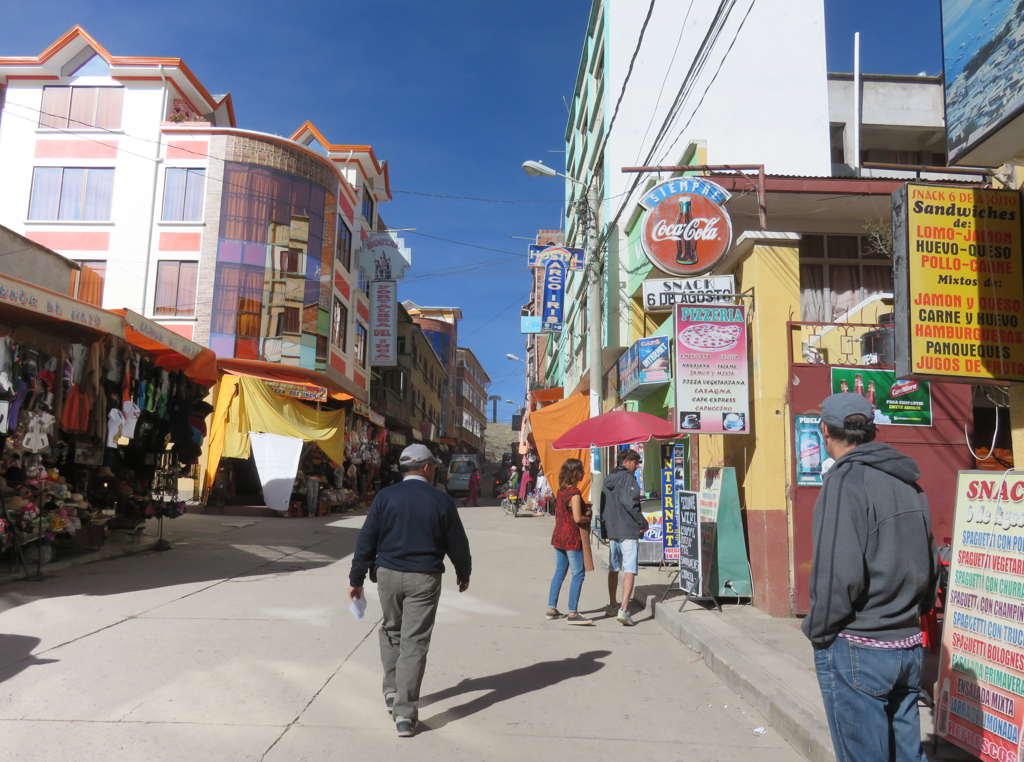
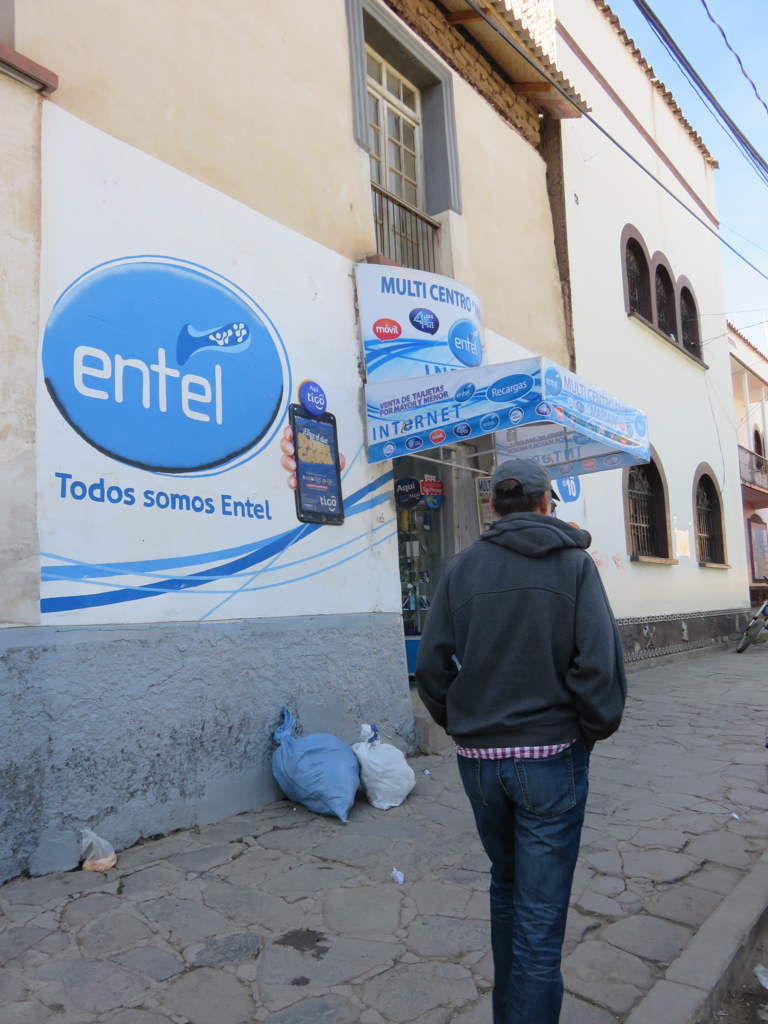
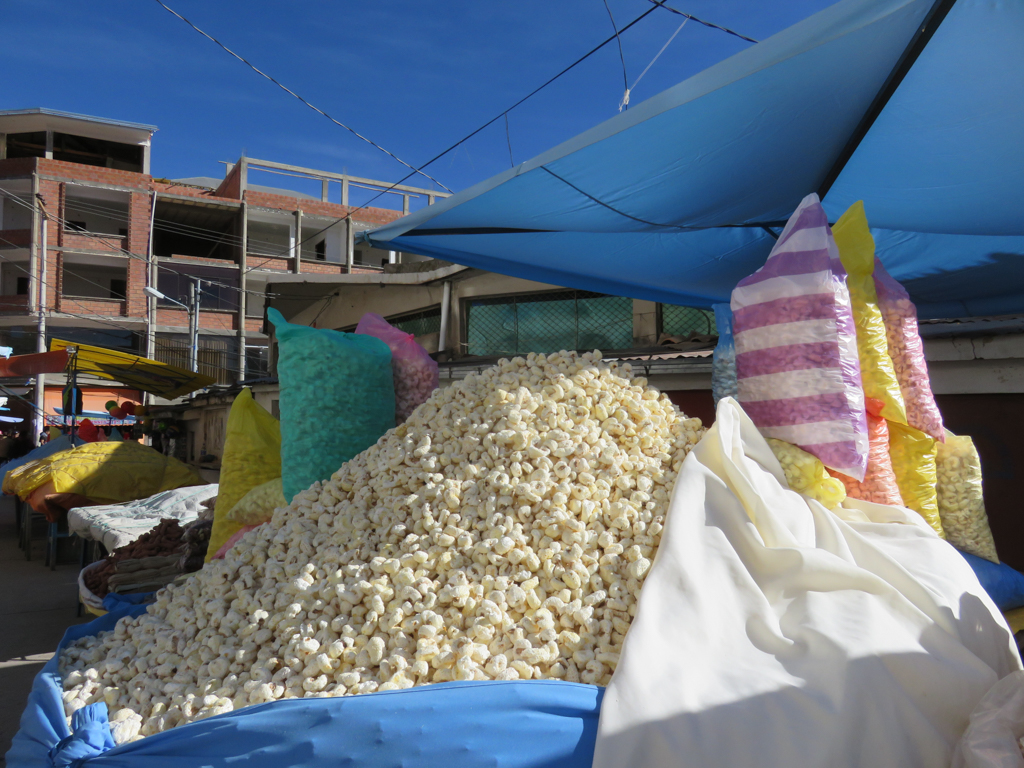
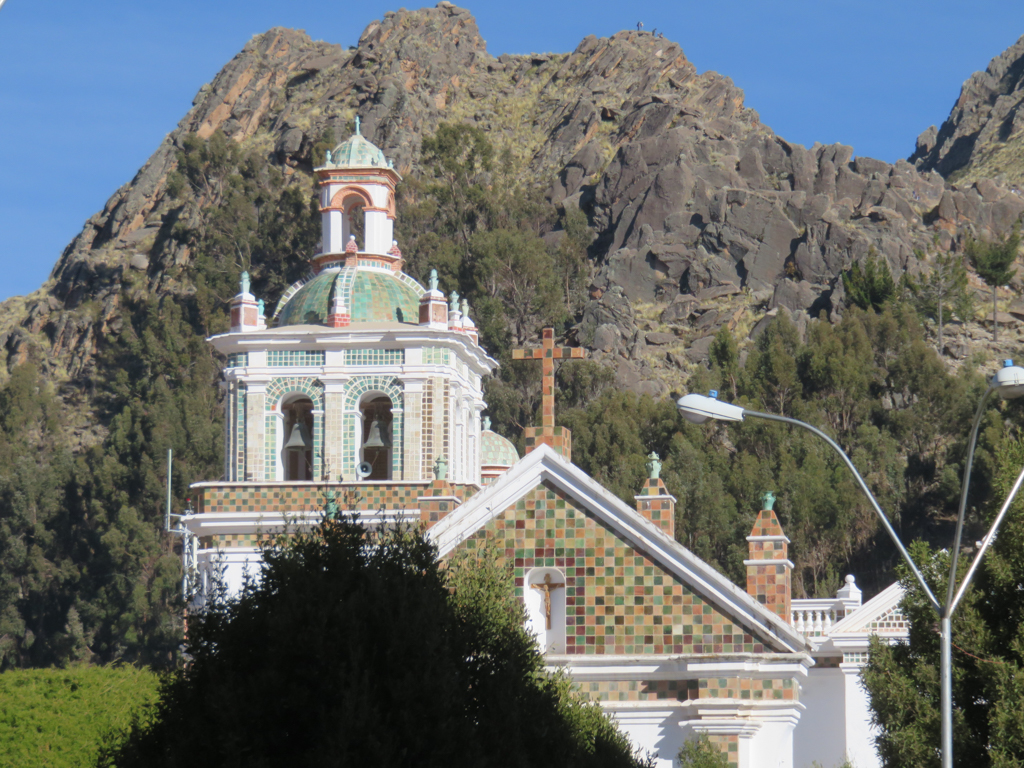
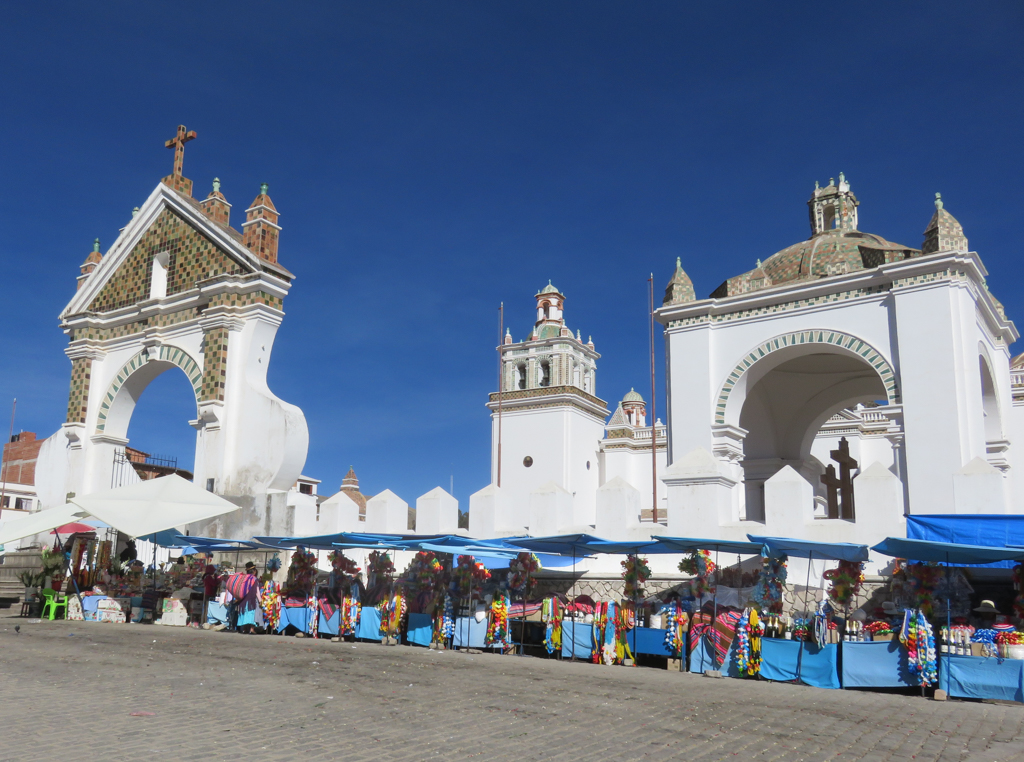
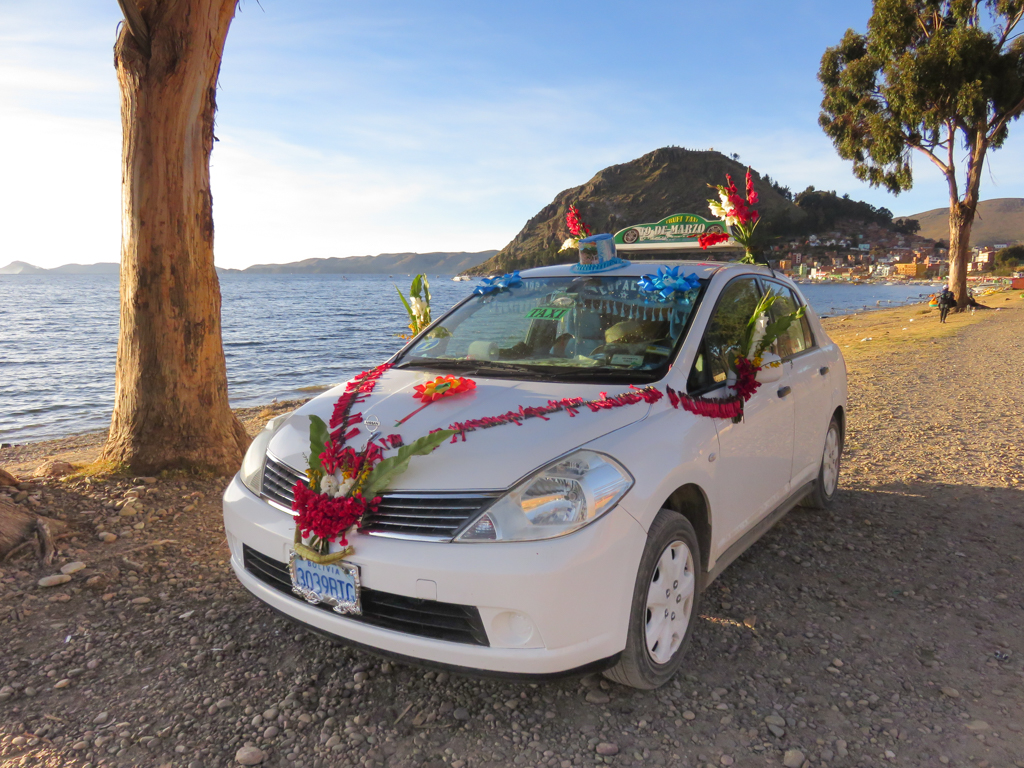
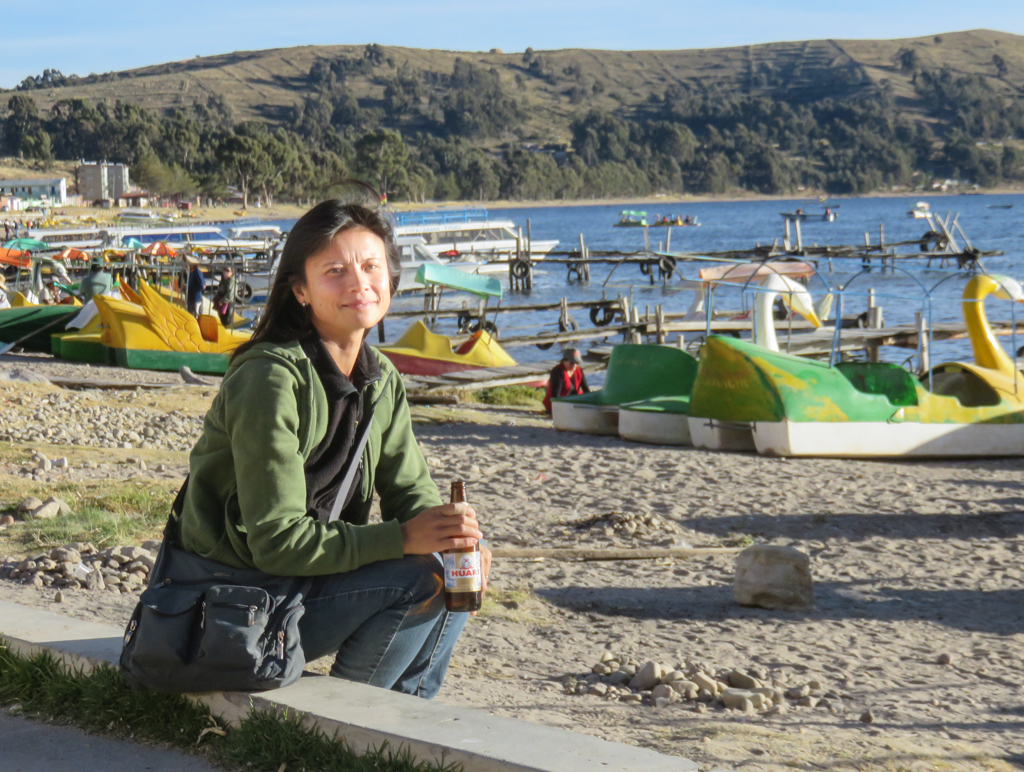
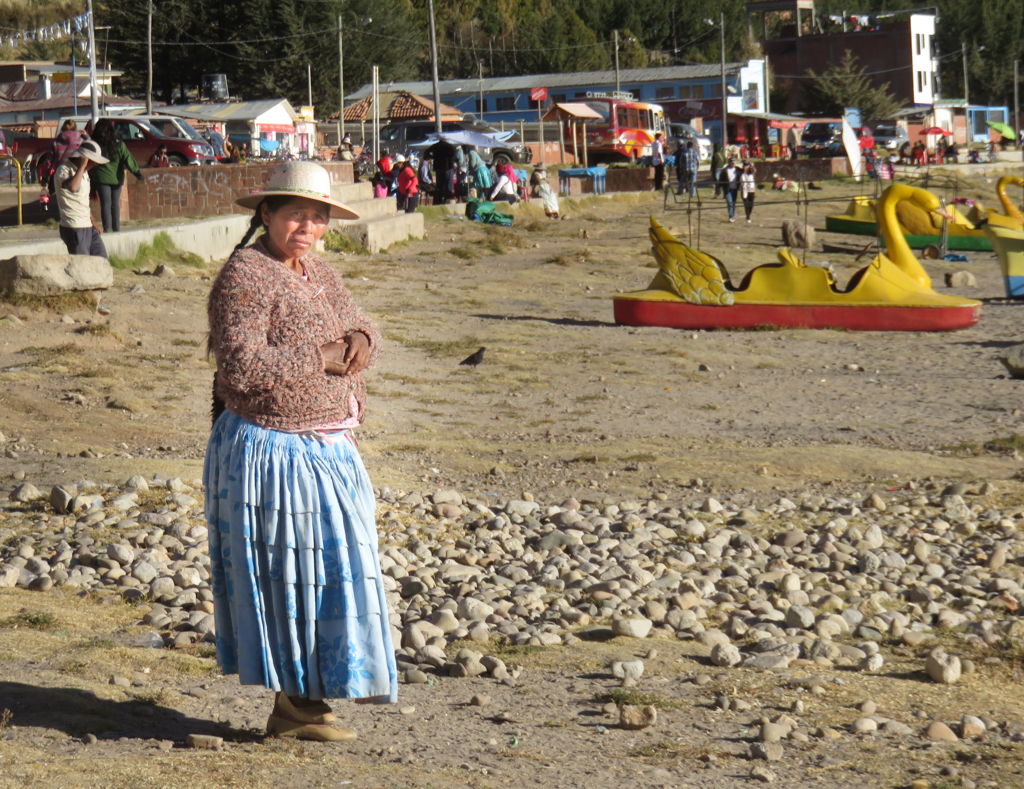
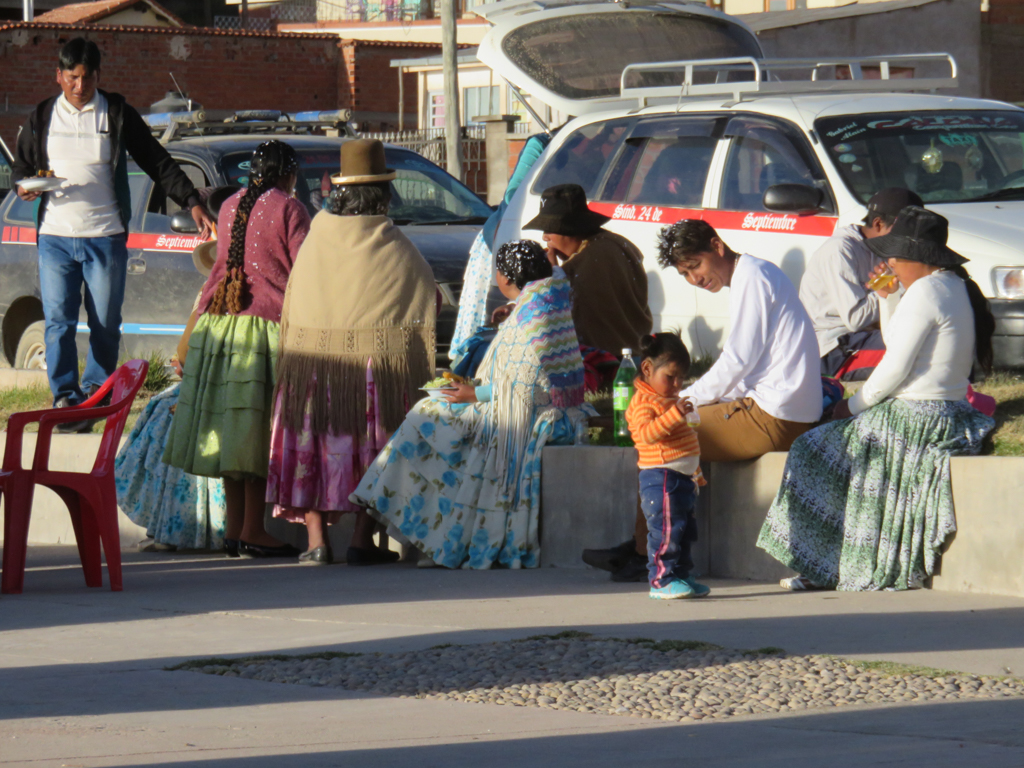
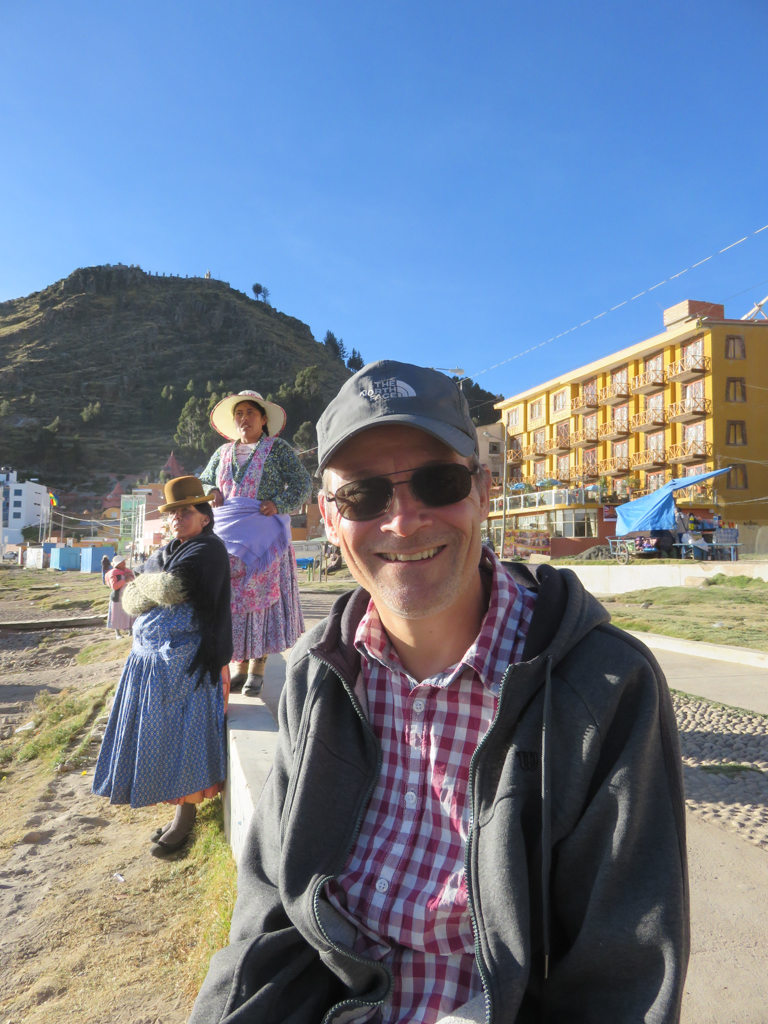
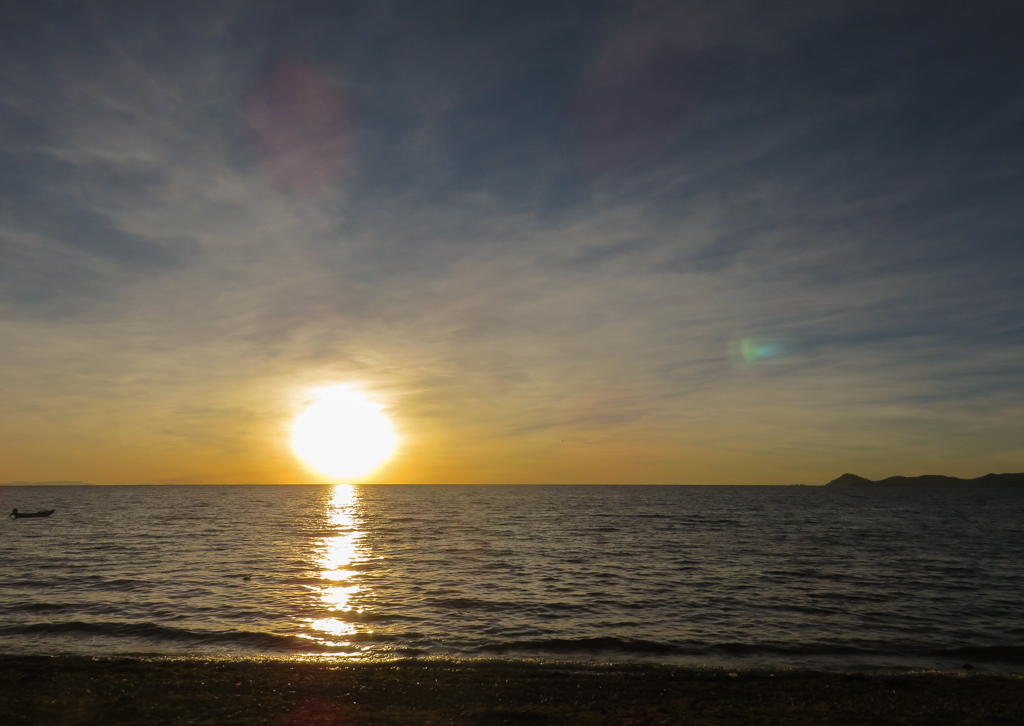
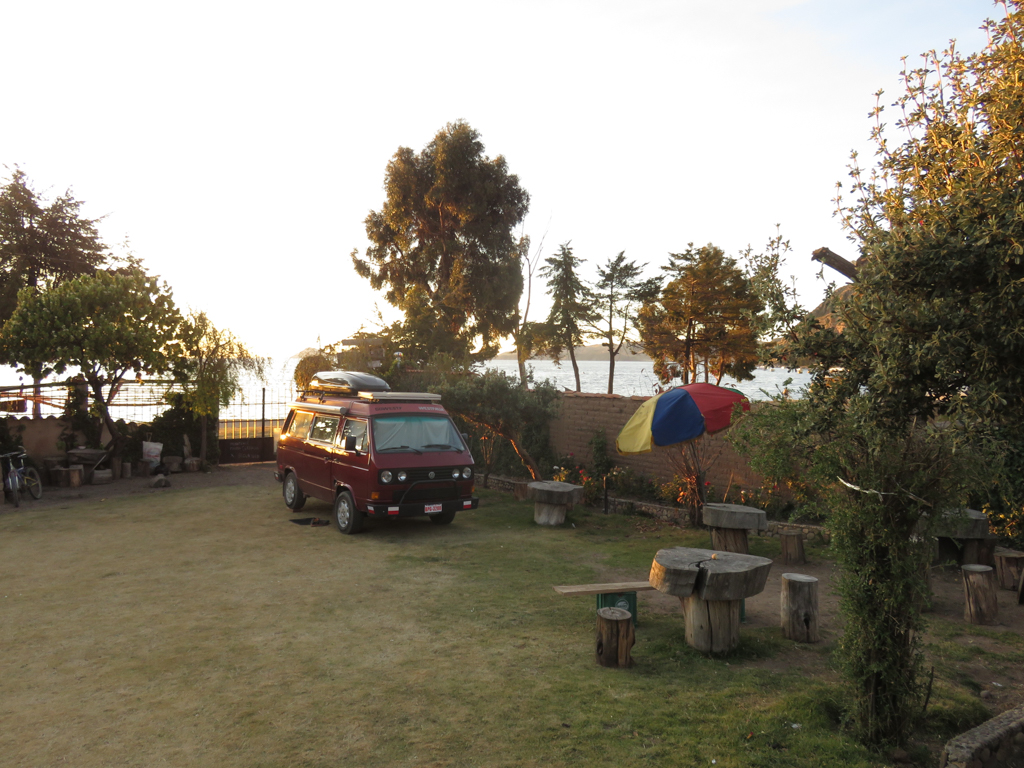
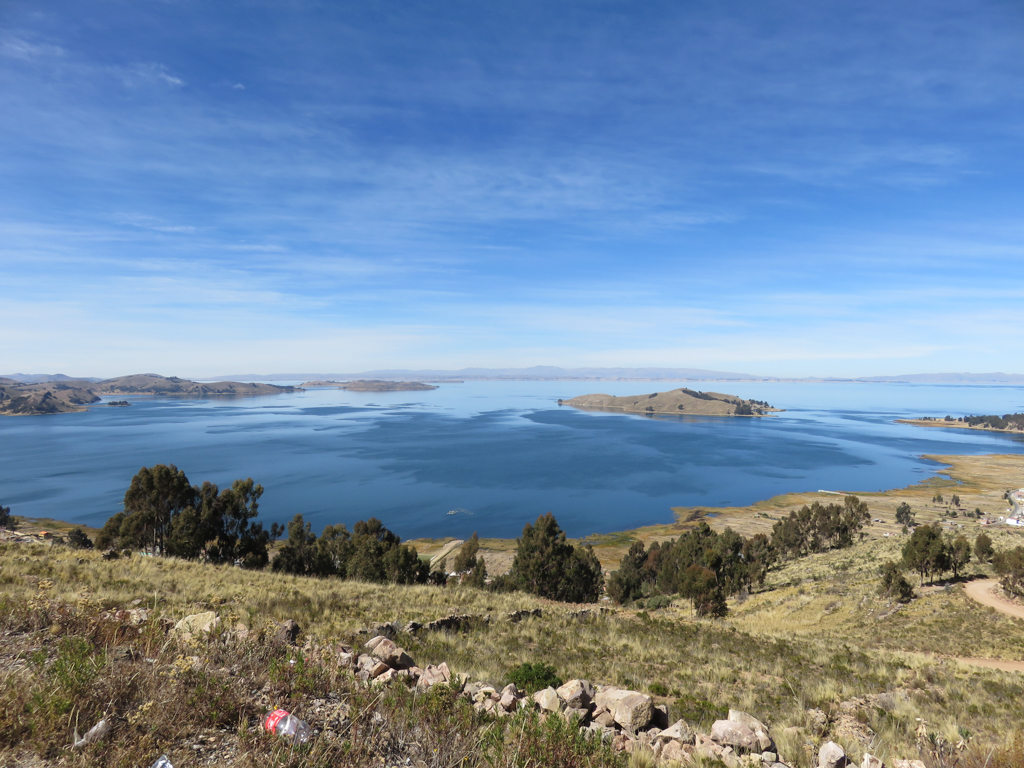
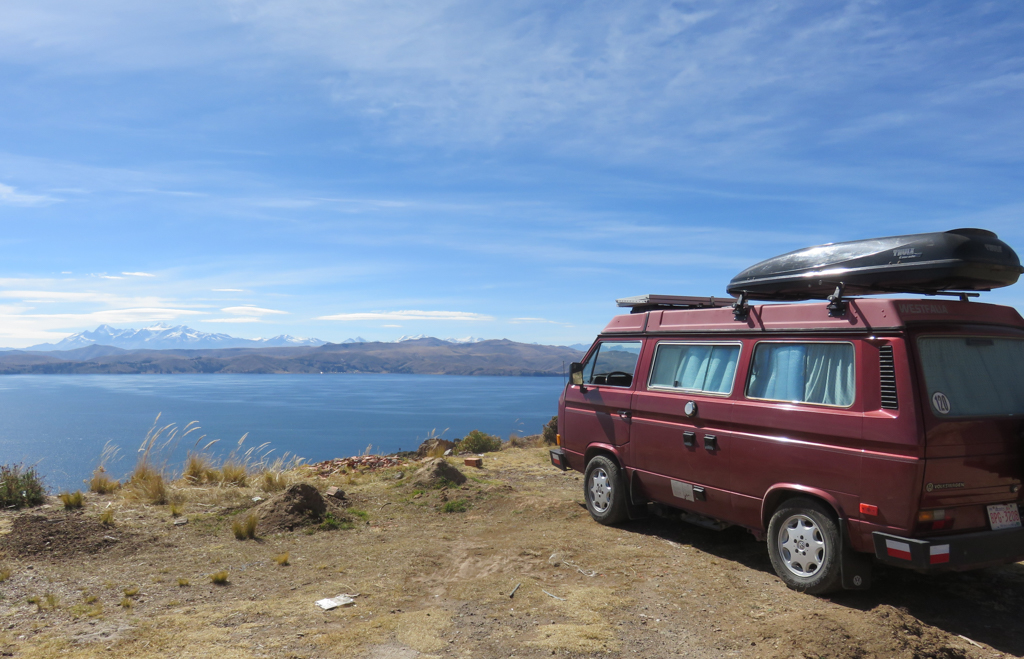
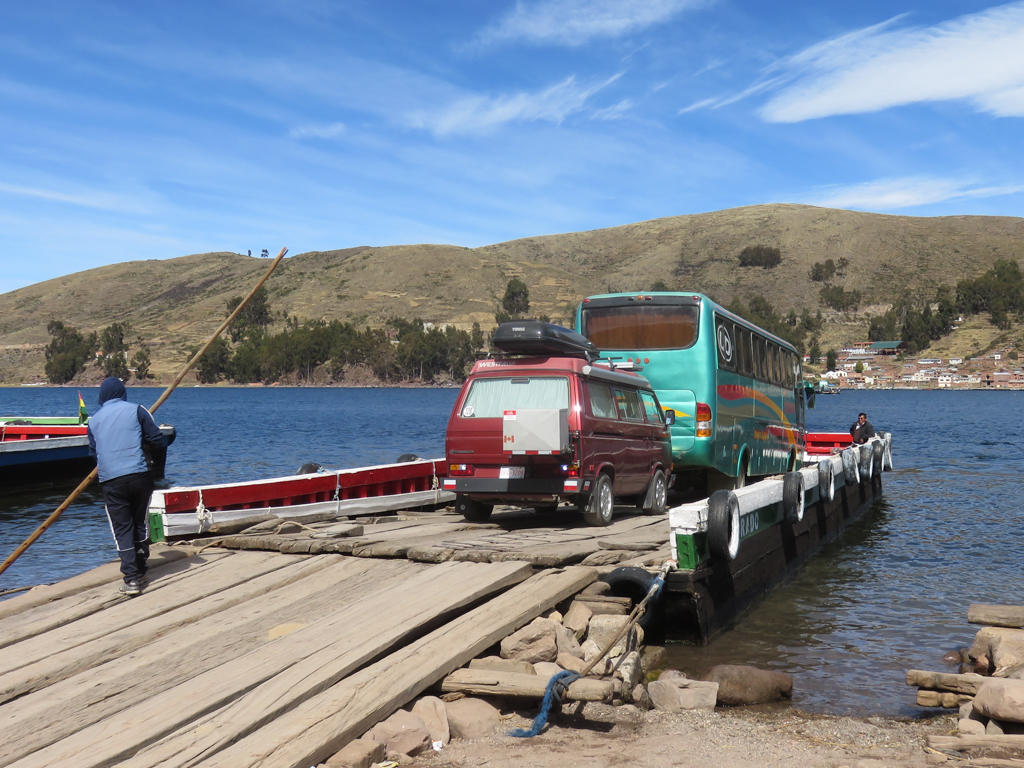
Hi Janice –
I’ve been humming Barry Manilow’s tune all day after reading about your visit to Copacabana. How cool that the place had a good vibe, as well. It makes such a difference when your first impression of a new town/city/country is positive. Great pictures – great post. Is that heater that you installed in Oaxaca helping take the chill off? Hugs, Karen 🙂
Hi Karen! Thanks for the feedback. It was nice introduction to Bolivia. So we installed that Propex heater in Oaxaca specifically for the high altitude regions in Bolivia. Would you believe it doesn’t work above 3200 m? Our coldest days in Bolivia were well above that altitude, so we froze in places like the Uyuni Salt Flats and the Lagunas Route, where nights went to -10 deg C. Crazy.
Still following along… Still miss you.
I thought of you and Rob while I was writing this post because I wondered what it would be like to live on a huge lake. Miss you guys!
You could make a living as a travel writer. Amazing read as always.
Thanks, Mel. You’re an amazing reader! Sometimes it just feels like ordinary life out here and I’m happy to know that you guys are still following along.